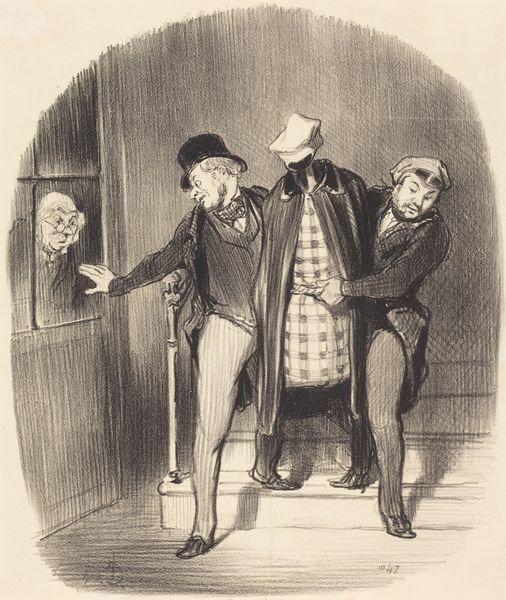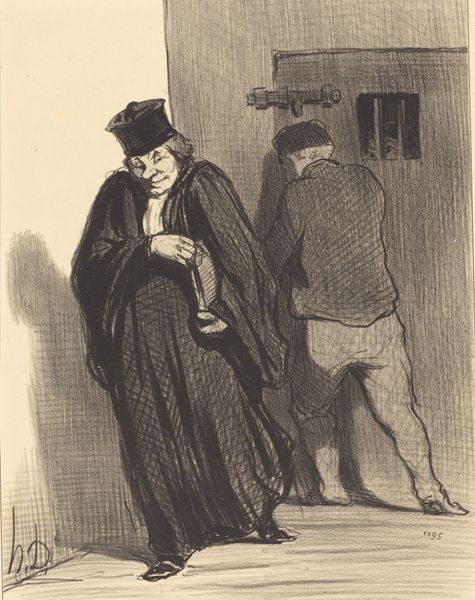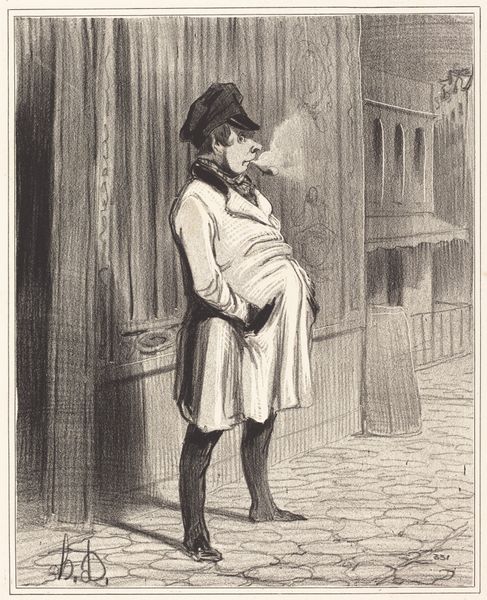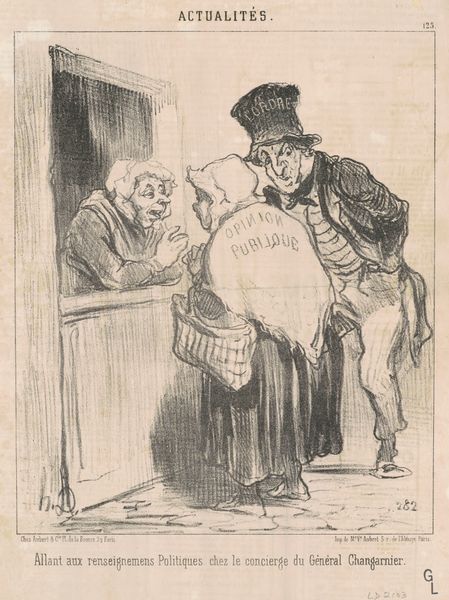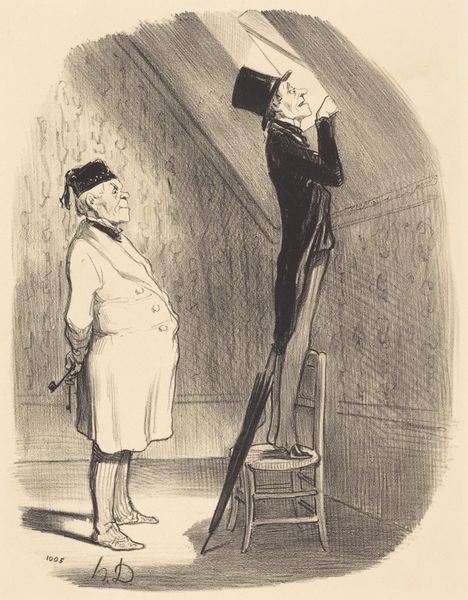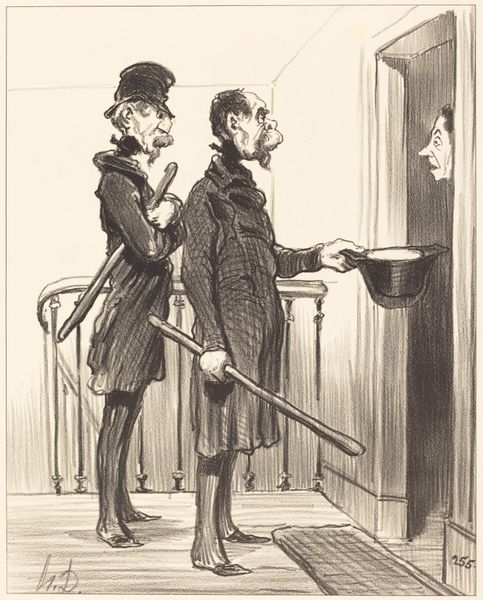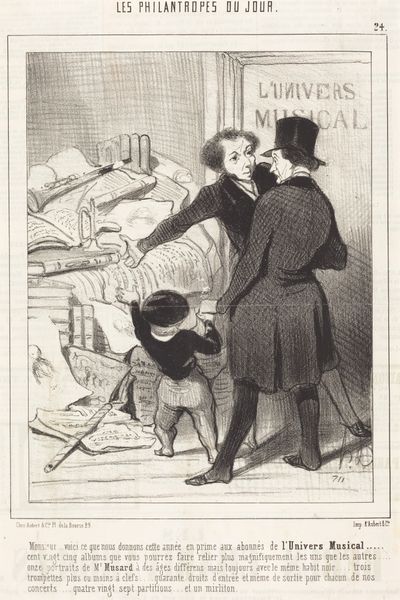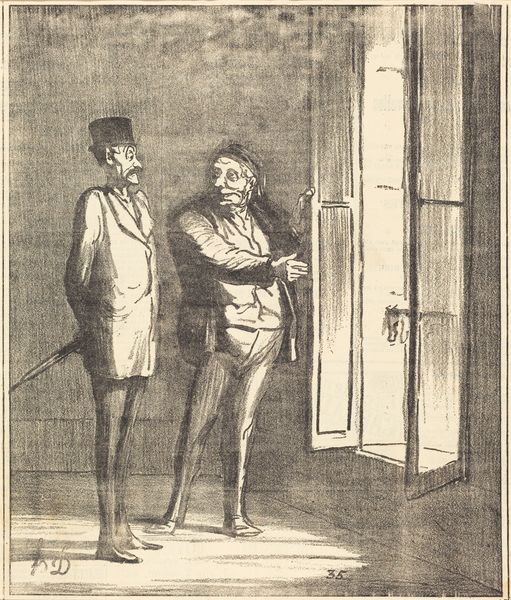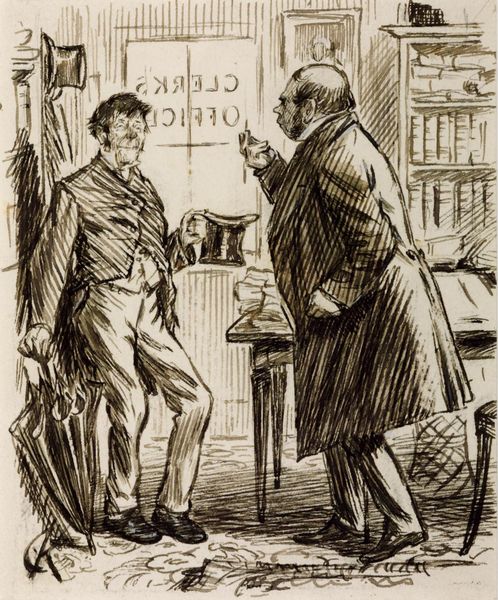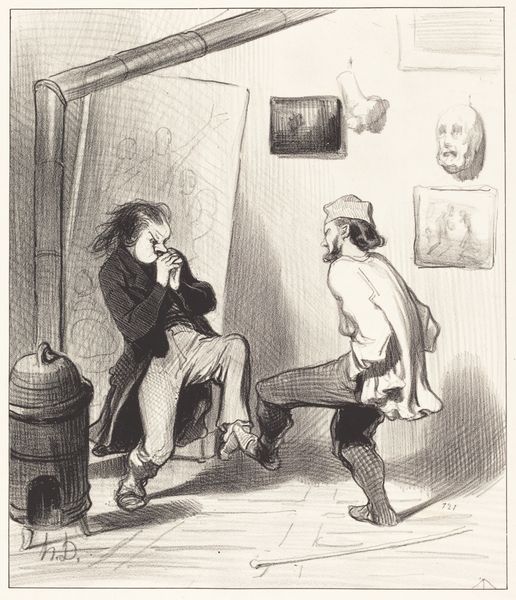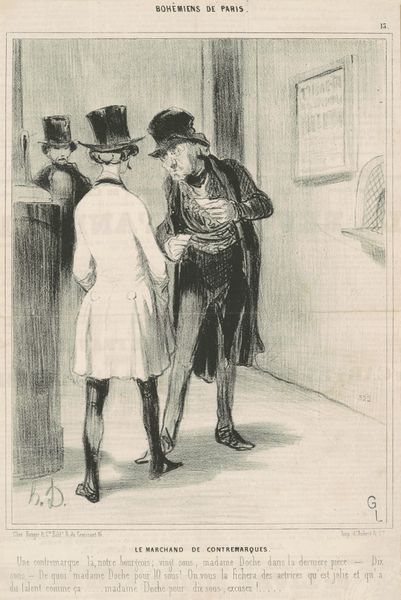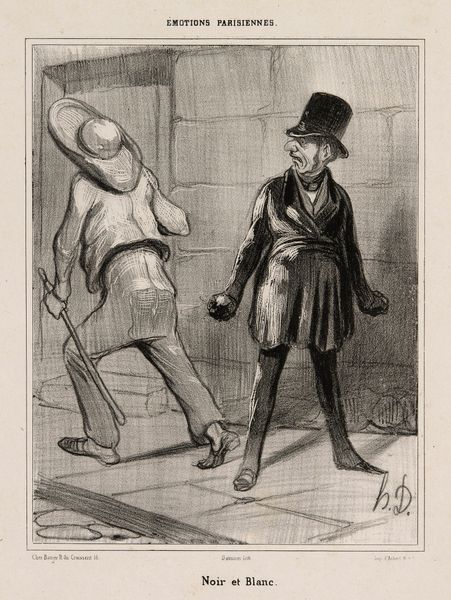
drawing, lithograph, print, graphite, pen
#
portrait
#
drawing
#
16_19th-century
#
lithograph
# print
#
caricature
#
caricature
#
romanticism
#
graphite
#
pen
#
genre-painting
#
realism
Copyright: National Gallery of Art: CC0 1.0
Editor: This is Honoré Daumier’s lithograph, "Un Locataire qui paie exactement son terme," or "A Tenant Who Pays Exactly on Time," from 1847. It’s a comical scene of a landlord confronting his tenant on the stairs. There's a kind of pointedness to it, like a stage in a play, especially in the almost aggressive way the landlord is looming over his tenant. What do you see in this piece? Curator: This lithograph really speaks to the social and political climate of 19th-century Paris. Daumier was known for his satirical commentary on the bourgeoisie, and this work fits squarely into that tradition. Consider the rise of urban living at the time. Landlords held significant power, and the economic pressures on tenants were immense. Doesn't the tenant almost cower under that power? Editor: Yes, definitely! The landlord is in a nightgown holding his keys, acting very unimpressed. And the other guy with his hat off seems kind of defeated. The details in their clothes, and in the stairway, definitely tell a story. It's such an everyday scene. Curator: Exactly. Daumier highlights that power dynamic, using the visual language of caricature to amplify the social critique. Look at the exaggerated features of the landlord – the condescending gaze, the prominent nose, the dismissive stance. He's the embodiment of authority, while the tenant shrinks in his presence. How do you think this lithograph was received by the public? Editor: It must have resonated. It’s pretty blatant. People in similar positions probably understood and maybe felt seen by it, although the upper class perhaps found it to be offensive. It's also easy to connect to even now. Curator: Precisely. The lithograph served as a mirror reflecting the often-uncomfortable truths about societal structures and the ways power operated in daily life. Its enduring appeal lies in its ability to invite us to reflect on our own perceptions of fairness and the unspoken contracts that shape our interactions. This has definitely shaped my view on caricature art and its value in culture! Editor: I totally agree! Thanks so much. I definitely look at the image with a broader point of view, now.
Comments
No comments
Be the first to comment and join the conversation on the ultimate creative platform.
